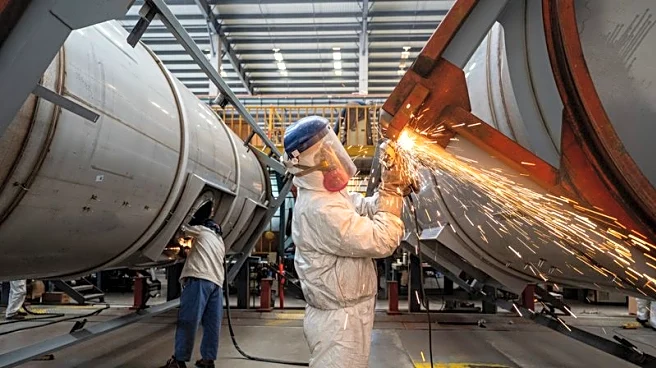What is the story about?
What's Happening?
The Building Cost Information Service (BCIS) has released a forecast indicating a 15% rise in civil engineering costs over the next five years, driven primarily by labor costs. Tender prices for civil engineering work are expected to increase by 24% during the same period. Despite government announcements and infrastructure strategies, activity levels have not significantly increased. Infrastructure output decreased by 9.2% in 2024, but BCIS forecasts a 2.5% growth in 2025 and an 18% increase overall by 2030. The forecast highlights the impact of increased National Insurance Contributions and the National Living Wage on wage bills.
Why It's Important?
The forecasted rise in civil engineering costs and tender prices has implications for the U.S. construction industry, affecting project budgets and timelines. The increase in labor costs, coupled with fiscal ambiguity, poses challenges for both public and private sector projects. Infrastructure spending traditionally supports construction during economic downturns, but current financial constraints may lead to delays or cancellations of planned projects. The forecast underscores the need for clear government policies to stimulate investment and maintain a steady flow of infrastructure projects.
What's Next?
The construction industry is facing uncertainty as private investors adopt a cautious approach, waiting for clearer financial conditions. Policymakers are tasked with balancing fiscal discipline while ensuring a steady flow of projects to stimulate growth. The BCIS forecast serves as a critical tool for industry stakeholders to manage costs and mitigate risks. Quarterly updates to forecasts will provide insights into evolving market conditions, helping stakeholders make informed decisions.
AI Generated Content
Do you find this article useful?














